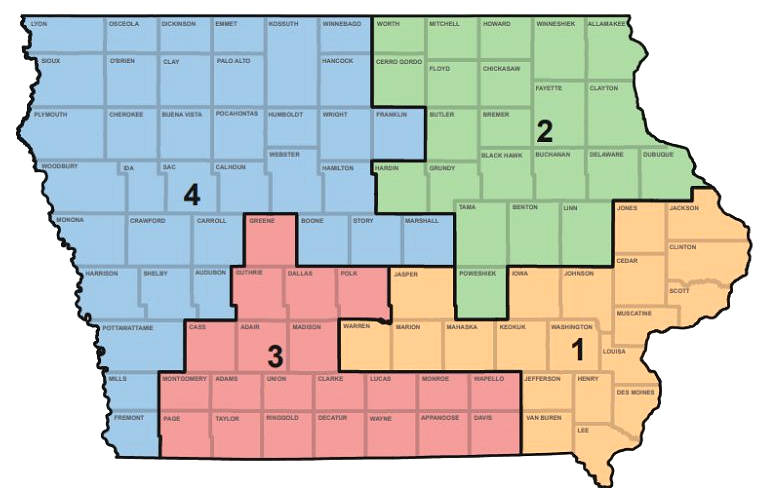By Jim Ellis — Wednesday, May 14, 2025
Governor
It was a bit of a surprise when in April, Iowa Gov. Kim Reynolds (R) announced that she would not seek a third full term next year. Because the active politicos believed she would run, it has taken awhile for major candidates to enter what should be a relatively competitive open Governor’s race. Now, however, candidates are beginning to come forward.Reports from Hawkeye State indicate that three-term Rep. Randy Feenstra (R-Hull/Sioux City) has filed documents to enter the open 2026 Iowa Governor’s race. Almost simultaneously, State Auditor Rob Sand announced his intention to compete for the Democratic gubernatorial nomination, thus possibly previewing what could become the general election campaign.
While state Sen. Mike Bousselot (R-Des Moines) and former state Rep. Brad Sherman are in the race, other major Republican potential contenders have either publicly declined to run or not taken action to move forward with a campaign.
The three other Republican congressional delegation members, Reps. Mariannette Miller-Meeks (R-Le Claire/Davenport), Ashley Hinson (R-Marion/Cedar Rapids), and Zach Nunn (R-Bondurant/ Des Moines) have all said they will not enter the Governor’s race and plan to seek re-election in 2026.
Lt. Gov. Chris Cournoyer (R) has announced for State Auditor. Attorney General Brenna Bird (R) is still a potential gubernatorial entrant, but the prevailing wisdom suggests she will seek re-election. Therefore, Rep. Feenstra should already be considered the early favorite for the party nomination.
On the Democratic side, Sand is the party’s only statewide elected official. There was some conjecture that he might challenge Sen. Joni Ernst (R), but when Gov. Reynolds decided not to seek a third term, it became probable that he would head for the open statewide election.
Potential primary opponents for Sand include state Sen. Zach Wahls (D-Des Moines) and state Rep. J.D. Scholten (D-Sioux City), who lost opposite Congressman Feenstra in 2020.
Three-term state Sen. Randy Feenstra came to Congress in 2021, after defeating by 10 percentage points then-Rep. Steve King in the 2020 Republican primary. He would go onto post a 62-38 percent win against Scholten in the associated general election. In his two re-election campaigns, Rep. Feenstra has averaged 67.2 percent of the vote.
The Congressman not seeking re-election means that now 16 seats will be open (9D-7R) heading into the next election. Two of the districts are vacant, AZ-7 and TX-18, due to the deaths of Reps. Raul Grijalva (D-AZ) and Sylvester Turner (D-TX). Both positions will be filled in 2025 special elections.
Iowa’s 4th District encompasses 36 west and central Iowa counties. The seat contains the entire South Dakota/Nebraska border region before stretching eastward to annex the city of Marshalltown, which lies northeast of Des Moines. The principal population centers are Sioux City, Council Bluffs, Ft. Dodge, and Marshalltown.
The Dave’s Redistricting App statisticians calculate a 61.9R – 34.9D partisan lean, making the 4th Iowa’s safest Republican seat. The Down Ballot political blog prognosticators rank IA-4 as the 81st-safest seat in the House Republican Conference. In the last two presidential elections, Donald Trump carried the district with margins of 65-34 and 62-36 percent over Kamala Harris and Joe Biden, respectively.
Testifying to the 4th’s strength as a Republican stronghold, in a close 2018 gubernatorial election Gov. Reynolds was elected statewide because of her overwhelming performance in this district. The Reynolds margin here was so large it enabled her to overcome losing the other three congressional districts.
This all suggests that Congressman Feenstra’s successor will be found in the Republican primary. We can, therefore, expect a crowded GOP contest.
Iowa recognizes plurality victories, but only if the leading candidate secures at least 35 percent of the vote. The top finishing candidate falling short of the 35 percent support threshold means a post-primary district convention would be called in which party delegates from each of the district’s 36 counties will choose a nominee.


